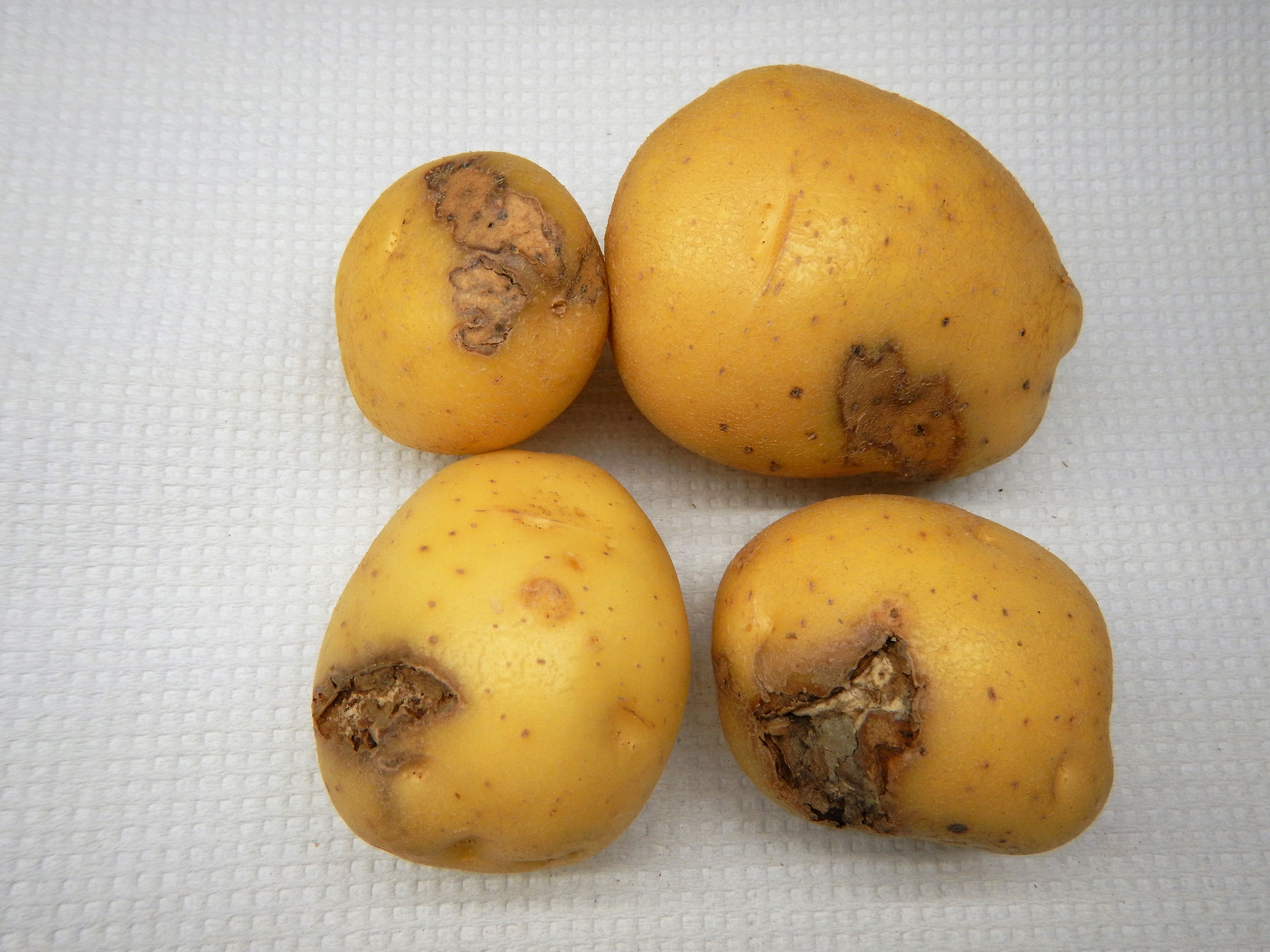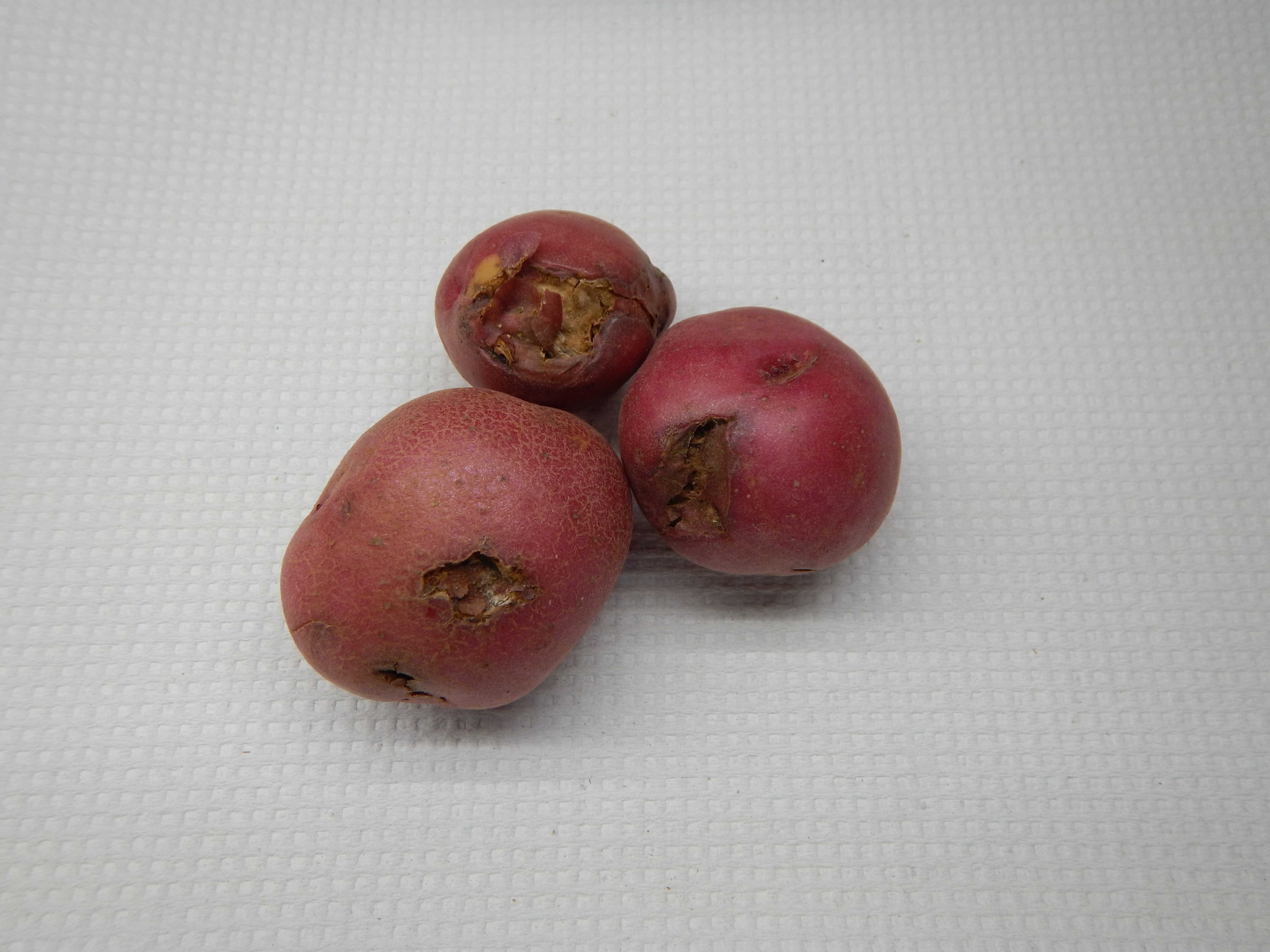Dry rot is one of the most important causes of post-harvest potato loss nationwide. Prevention of the fungus, which is caused by several species in the genus Fusarium, begins with a proper seed treatment.
The pathogen typically infects a tuber via a cut or bruise before slowly spreading throughout the tuber. The first symptoms of Fusarium dry rot are usually dark lesions on the surface of the tuber, while the skin covering the affected area wrinkles as the underlying tissue dries up. Internally, the affected tissue will appear light to dark brown or black as the fungus kills the cells.
 Although the fungus primarily enters the tuber through injuries sustained in the seed-cutting phase, it can also spread in seed storage, commercial storage, equipment and conveyor systems, or via infected soil during cultivation. The risk of disease spread is high during storage phases, which is done at cooler temperatures, meaning the fungus tends to spread slowly and take longer for symptoms to appear. However, once you bring out potatoes for cutting and planting, the latent infection manifests in the form of rotted centers. The chances of spreading Fusarium during handling and cutting are very high.
Although the fungus primarily enters the tuber through injuries sustained in the seed-cutting phase, it can also spread in seed storage, commercial storage, equipment and conveyor systems, or via infected soil during cultivation. The risk of disease spread is high during storage phases, which is done at cooler temperatures, meaning the fungus tends to spread slowly and take longer for symptoms to appear. However, once you bring out potatoes for cutting and planting, the latent infection manifests in the form of rotted centers. The chances of spreading Fusarium during handling and cutting are very high.
“Generally, seed is stored very cold; you don’t see the extent of spread in a storage facility,” says Kiran Shetty, technical product lead for Syngenta. “But once the potatoes start to warm when they’re brought out for cutting and planting, the latent infection that was in the potato starts to cause a dry rot. If the conditions are right, the dry rot will turn into a soft rot. If you plant a seed piece with Fusarium, very likely the Fusarium will spread and you might not get any emergence out of that particular seed piece.”
In preparation for long-term storage of your seed potatoes, there are few things to consider:
- Check for warm spots in the storage. These areas of rot can quickly spread to surrounding tubers.
- Maintain a constant holding temperature within the potato pile.
- When removing potatoes from storage, handle them with great care and avoid bruising. This care should continue throughout post-storage operations until the seed is cut, treated, transported and planted.
 It is imperative to use an effective seed treatment when preparing for planting. CruiserMaxx Vibrance Potato, one of Syngenta’s newest seed treatments registered for use in the United States, contains two modes of action to fight Fusarium spread. CruiserMaxx Vibrance Potato also reduces the silver scurf and Rhizoctonia spread in the early stages of plant establishment and subsequent growth and development.
It is imperative to use an effective seed treatment when preparing for planting. CruiserMaxx Vibrance Potato, one of Syngenta’s newest seed treatments registered for use in the United States, contains two modes of action to fight Fusarium spread. CruiserMaxx Vibrance Potato also reduces the silver scurf and Rhizoctonia spread in the early stages of plant establishment and subsequent growth and development.
Following are some general guidelines to reduce or eliminate Fusarium problems being carried into the next production season:
- Consider CruiserMaxx Vibrance Potato for seed treatment to improve seed germination and crop establishment.
- Inspect seed during the final months of storage to identify and remove any tubers infected with Fusarium. Planting a seed piece infected Fusarium will result in poor plant emergence and contamination of the soil.
- Thoroughly disinfect all areas and tools prior to seed handling and cutting. Additionally, warm seed tubers to at least 50 degrees Fahrenheit before handling and cutting, in order to minimize injuries that will invite fungus growth.
- Protect seed from wind and sunlight during planting, as dehydrated seeds are prone to infection.
- Follow all handling guidelines to reduce chances of Fusarium spread during transportation and planting.
- Keep potato pulp temperature of the seed as close as possible to the planting soil temperature. This will significantly reduce the chances of Fusarium seed rot.
